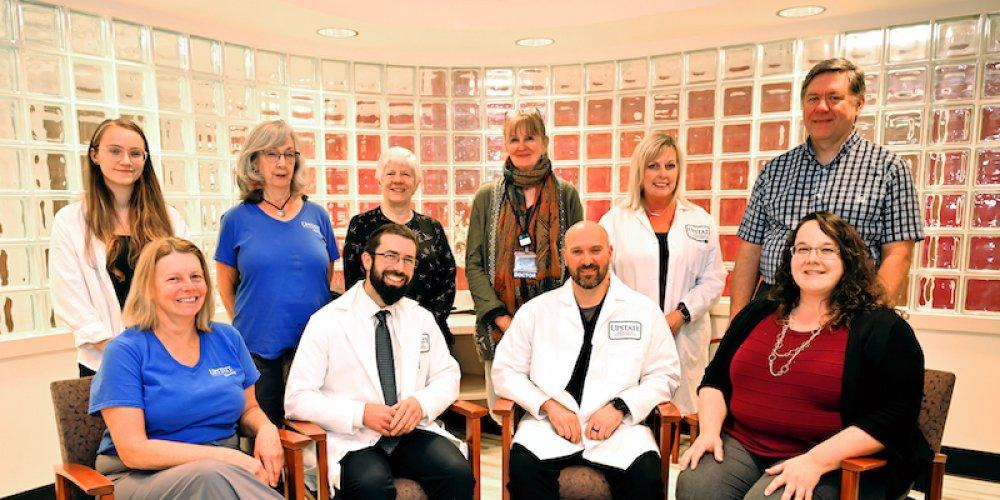New targeted cancer treatment now offered at Upstate
Upstate Medical University offers a new cancer treatment that can both locate and treat certain types of cancers with guided precision, delivering radiation directly into the cancer cells.
According to David Lubin, MD, PhD, assistant professor of radiology, this new form of treatment for cancer utilizes a molecule that binds to specific cancer cell receptors and delivers a high concentrated dose of radiation to the tumor cells to kill them—and it does so without harming surrounding tissues.
Also known as radioligand therapy, these state-of-the-art therapeutic and diagnostic agents, known as theranostics, currently treat neuroendocrine tumors and prostate cancer.
Upstate is the only hospital in Central New York to offer this treatment options for advanced cancers that have become resistant to chemotherapy.
The technology can detect neuroendocrine tumors that overexpress certain types of receptors. These can occur in the brain, the thyroid, the lungs or the gastrointestinal system.
“They all share the same commonality of what’s on their surface, these receptors,” Lubin said. “This tracer is a way to detect where this disease is throughout the body.”
The addition of lutetium (Lu177)—a radioactive atom—turns the tracer into a treatment.
“We do it all with one molecular motif,” Lubin said.
Patients get an injection of the diagnostic version of the agent and then a PET scan, where doctors can see the agent locate the specific tumors.
Then they inject the patient with the therapeutic version to kill the cancer. A typical treatment is four to six doses spaced out by six or eight weeks. Biomarkers in follow-up blood work determine the degree to which the treatment worked.
The tracer delivers the radiation only to the cancer cells, sparing the surrounding tissue which in turn helps reduce side effects. Typical radiation, even though localized, has to penetrate the body to get to the tumor and can come with side effects such a skin changes, fatigue, nausea and hair loss. This type of treatment is so direct and quick it also prevents cells from becoming resistant to it. Lubin said patients have reported minimal side effects and general improvement in quality of life after the treatment.
“Nothing is 100 percent in medicine, but it preferentially leaves the rest of the body alone,” Lubin said.
Upstate Radiology in conjunction with Hematology/Oncology and Urology at the Upstate Cancer Center currently offers two FDA-approved agents, Lutathera and Pluvicto, which target neuroendocrine and prostate cancer respectively. Upstate has treated about 20 patients for prostate cancer as part of a clinical trial, and now that therapy is available for general use. The hospital recently treated its first patient for neuroendocrine cancer with Lutathera.
But the possibilities of this cutting-edge treatment are endless, as researchers identify different receptors for different types of cancers. Lubin said a diagnostic agent for estrogen receptors for breast cancer has recently become FDA approved and Upstate is working toward offering that soon.
“This is a new paradigm, and that is if you can identify the receptors that are unique to the cancer you can not only see them on a PET scan, but you can treat them as well,” he said. “That is opening up the area of theranostics. This is an exciting new chapter in oncology treatment, and we are a part of it here at Upstate.”
Caption: Members of Upstate Radiology who are bringing the new theranostics treatments to patients are, front row, from left: Paige Moran, RN; David Lubin, MD, PhD; Kurt Wilson; Mary Richardson. Back row, from left: Amy Biggs, Margaret Barner, RN, Karen Fitzgibbons; Mary McGrath, MD, Maureen Tetro, David Salerius.

